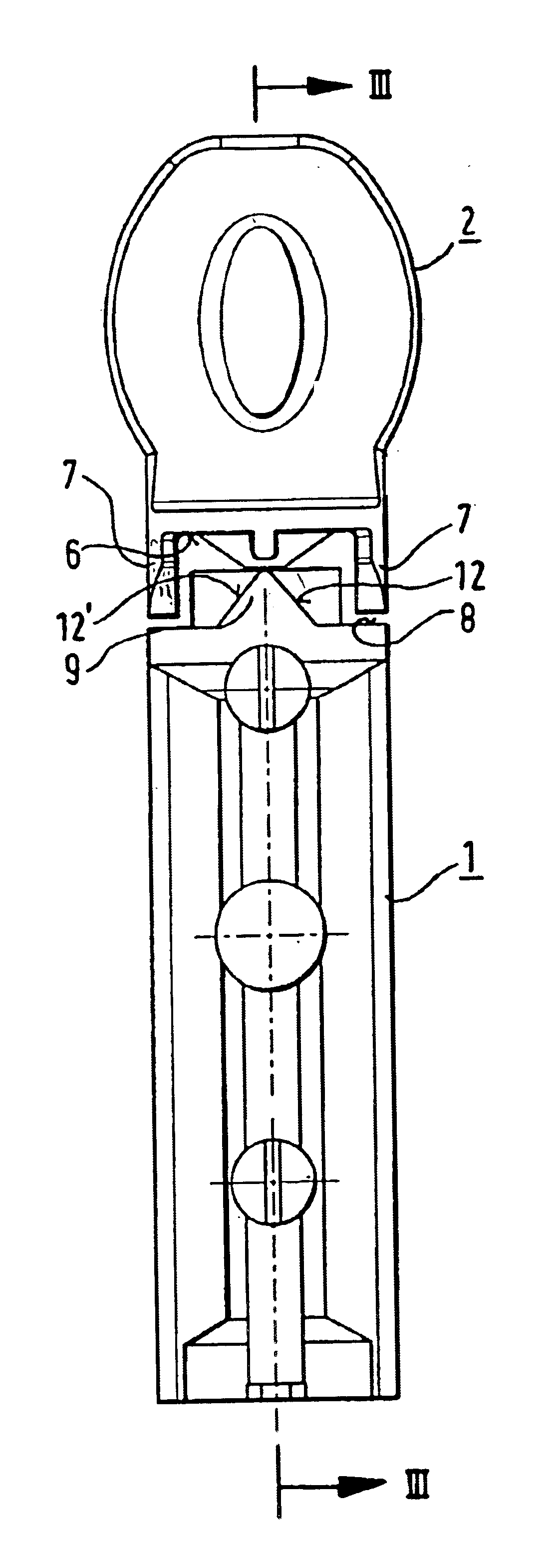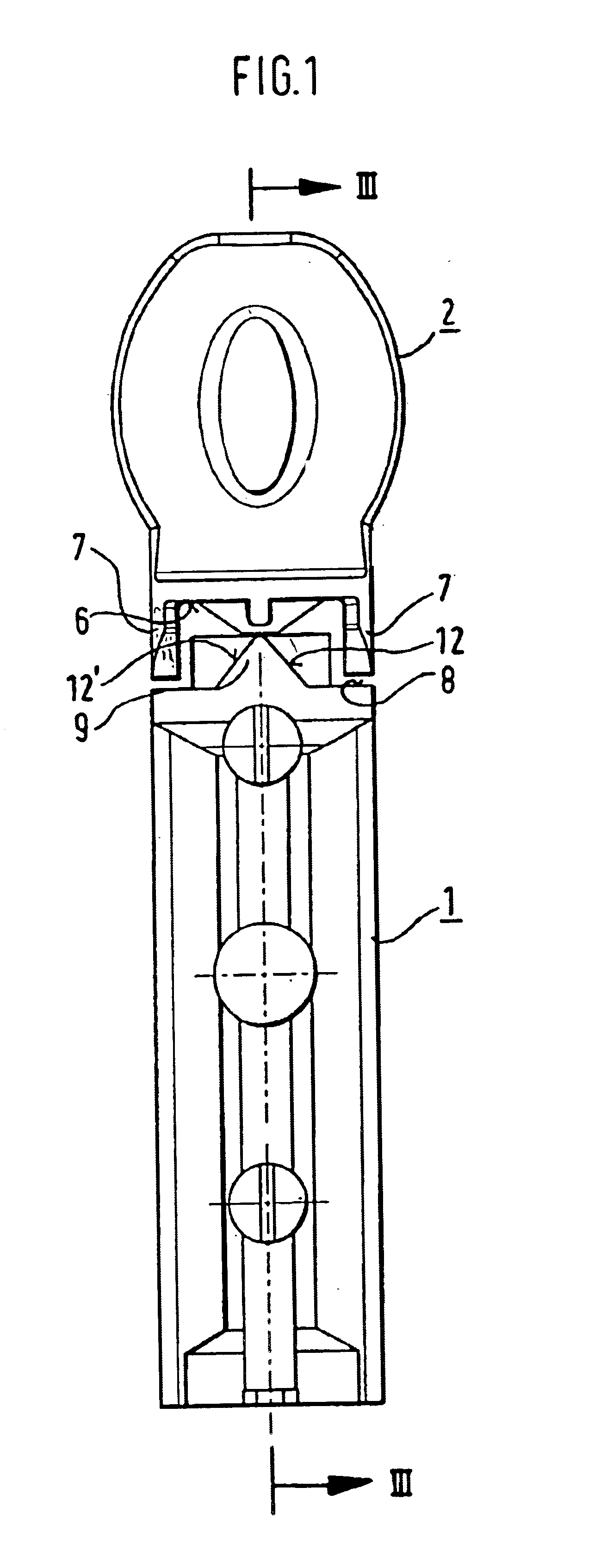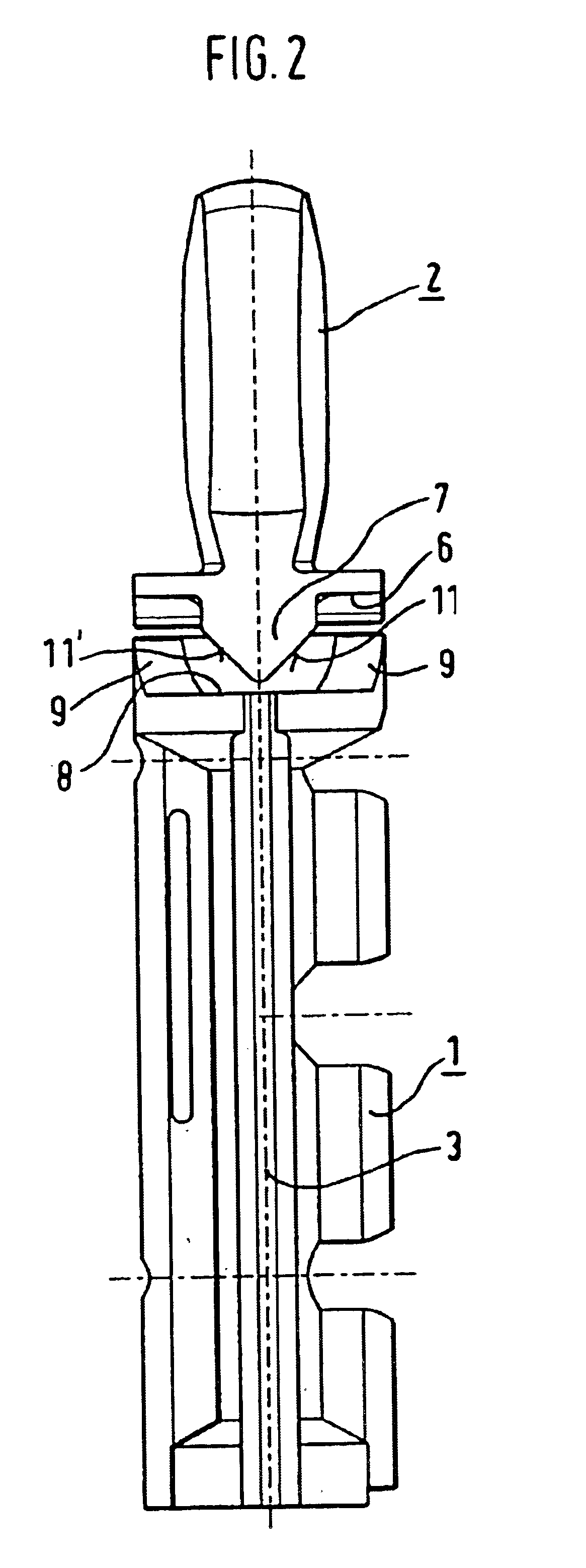Lancet for blood extraction
a technology for lancets and blood, which is applied in the direction of blood sampling devices, medical science, surgical saws, etc., can solve the problems that the lancets cannot be handled by actuating means, and the above-mentioned problems cannot be overcome, so as to prevent the pointed end section of the needle from being bent and prevent the lateral deflection of the head portion
- Summary
- Abstract
- Description
- Claims
- Application Information
AI Technical Summary
Benefits of technology
Problems solved by technology
Method used
Image
Examples
Embodiment Construction
The lancet according to the present invention is shown in FIG. 1 and comprises a base portion 1 and a head portion 2. A lancet needle 3 is firmly held in the base portion 1. The base portion 1 and the head portion 2 are integrally connected with each other at a preset severing or breaking zone 4 which is shown in FIG. 3. The base portion 1 and head portion 2 of the lancet preferably is an injection moulded integral part of a suitable plastics material such as a polyolefine, e.g. polypropylene or polyethylene, but other plastics materials could be used if so desired. The preset breaking zone 4 is designed such that it can be caused to sever under the effect of an external force in order to separate the head portion 2 from the base portion 1. The preset breaking zone 4 may be in the form of a peripherally extending narrowing of the cross-section or it may be formed by a plurality of peripherally distributed, axially extending breakable webs. Other suitable constructions of the preset ...
PUM
 Login to View More
Login to View More Abstract
Description
Claims
Application Information
 Login to View More
Login to View More - R&D
- Intellectual Property
- Life Sciences
- Materials
- Tech Scout
- Unparalleled Data Quality
- Higher Quality Content
- 60% Fewer Hallucinations
Browse by: Latest US Patents, China's latest patents, Technical Efficacy Thesaurus, Application Domain, Technology Topic, Popular Technical Reports.
© 2025 PatSnap. All rights reserved.Legal|Privacy policy|Modern Slavery Act Transparency Statement|Sitemap|About US| Contact US: help@patsnap.com



